Special purpose audio gadget: “warm” tube recorder and spy watch from the early 50s
This is another pilot post for a new cycle. It is known that many innovations do not immediately enter the mass free market, and their use for decades may be limited only by special equipment. This cycle will be just about such devices, the history of their creation and use.
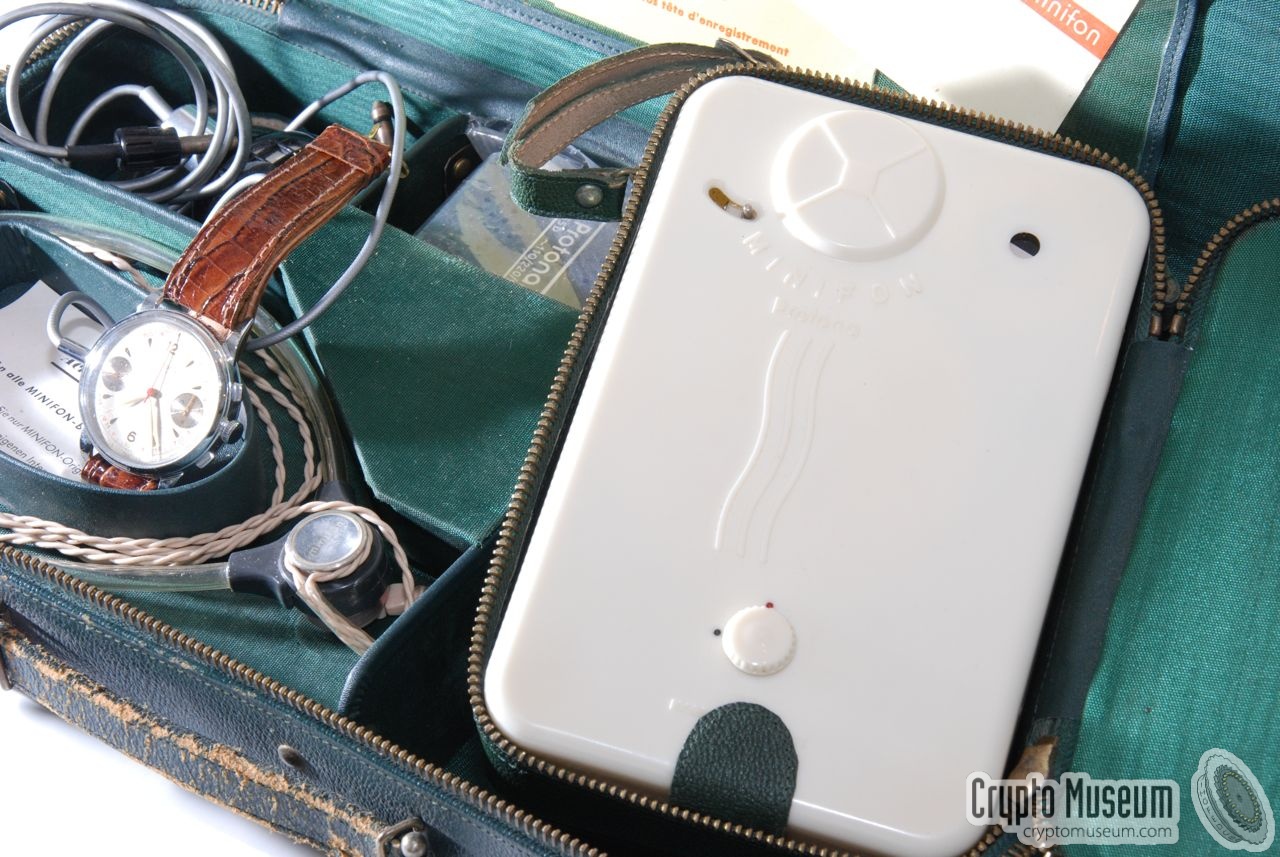
Perhaps one of the most legendary, for many years predetermining the development trends of this type of audio equipment, was the special portable wire recorder Protona Minifon MI-51 of 1951. This device was considered the smallest of the mass-produced in the world from 1951 to 1955. A characteristic feature was the use of a number of unique for that time accessories (headphones, hidden-wear microphones, etc.), to which a separate part of the article will be devoted.
Perhaps everyone who watched the legendary Soviet series of 17 moments of spring recall the scene where Stirlitz uses a portable voice recorder. The film used a portable reel film recorder “Electron-52D”, which was “made up” for Siemens products, by sticking a logo.
')
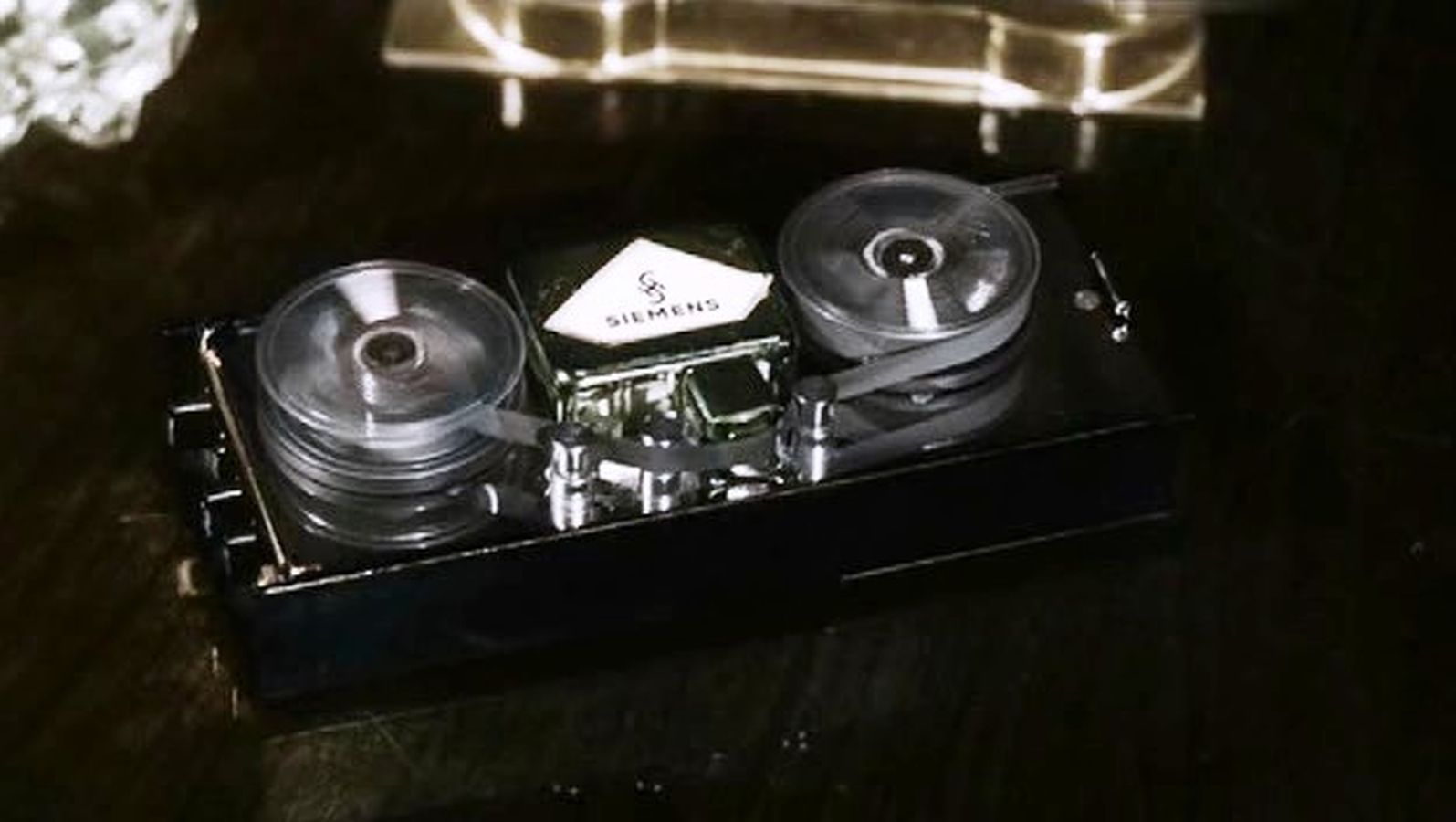
I have never met such portable tape recorders since the war. The vast majority of wartime voice recorders were quite impressive in size, like the unit shown in the photo below, supposedly by the company telefunken.

At the same time, the activities of the special services during the 2nd World War showed that employees of various departments badly need a portable tape recorder, preferably with independent power. The future creator Minifon knew about this need.
Willy Dryheim, who began developing such a device back in 1948. It is quite natural that Dryheim developed a portable tape recorder using lamps, while the first point transistors only appeared as imperfect cumbersome experimental devices.
To develop the development, the engineer began a collaboration with businessman Nikolaus Monske and his company Monske & Co GmbH. Monske, in turn, was able to attract private investment from Ernst Genning, who during the war was his Luftwaffe counterpart. By whom and where Dryheim himself worked during the war is unknown, the biographical data of the inventor are not freely available.
A new device was created in 2 years, and another year was spent on the organization of mass production. The latter were particularly problematic in Germany, whose industry had not yet fully recovered from the consequences of defeat in World War II.
The gadget was called Minifon MI-51. The device was presented to the general public at the Industriemesse industrial fair in Hanover. Dictaphone instantly won the interest of visitors and in particular representatives of the special services, who, it would seem, got what they wanted.
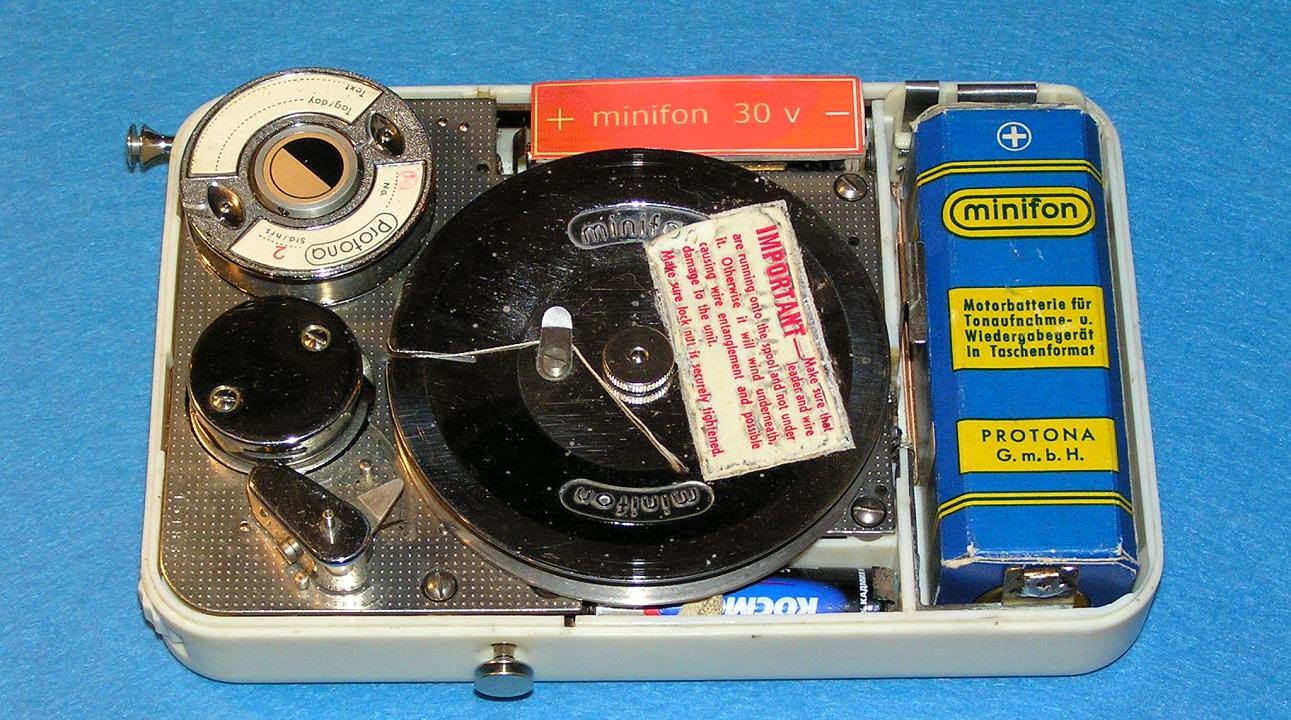
According to www.cryptomuseum.com , by the end of 1951, one unnamed customer from the United States (I think it was either a “bureau” or the CIA) issued a large order, with an advance payment of $ 50,000. By this time, the company has increased the staff number from 70 to 180 people. In 1951, the Minifon MI-51 cost 680 DM (which today would be about $ 3000).
The device turned out to be really compact for that time 17x11x3.5 cm. Moreover, it was autonomous, which, together with the dimensions, opened up new possibilities for use. Over the course of the year, several options for a complete set were developed, among which the wrist watch microphone particularly stood out.
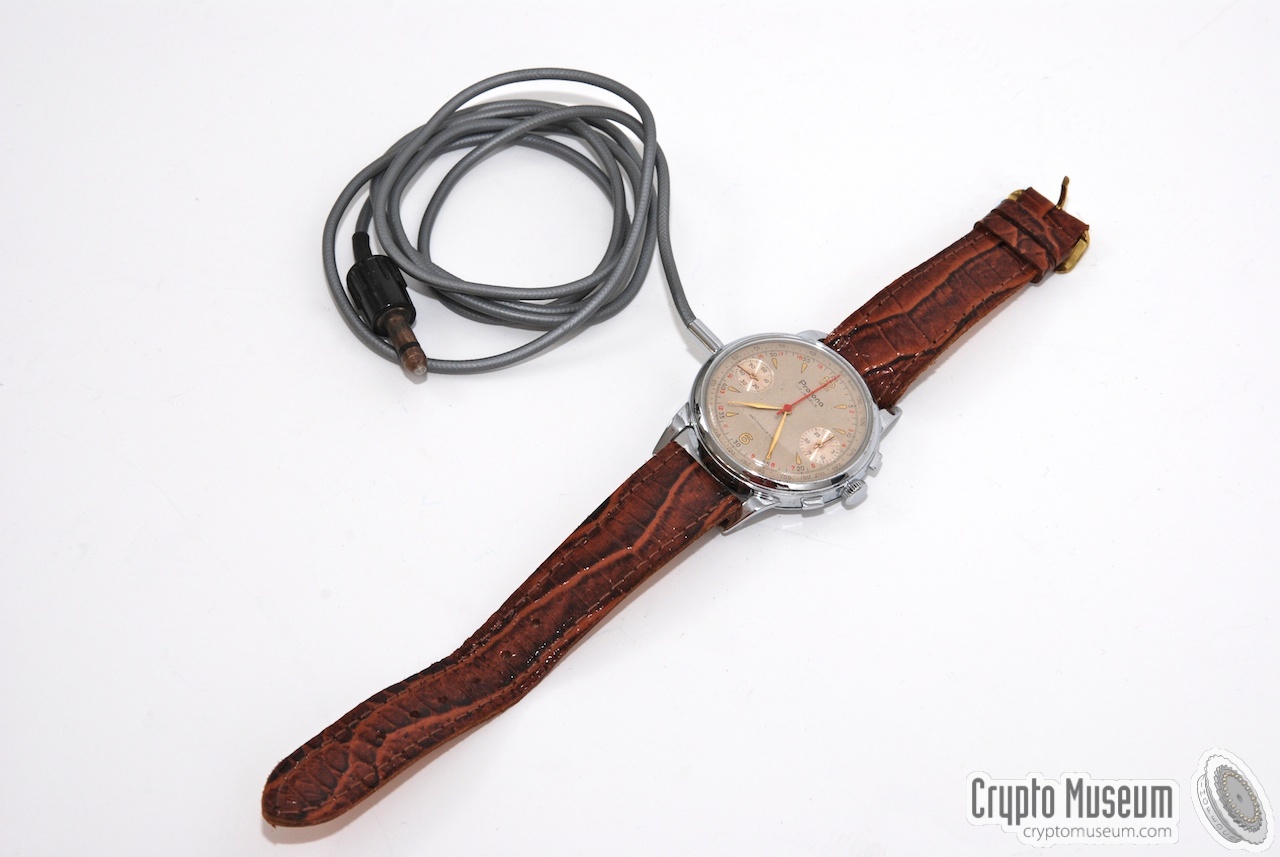
We can safely say that for the officers of the special services and detectives of the time, Minifon MI-51 was such a welcome gadget, like today is another new iPhone for fans of Apple products. It is known that, due to the lack of mass production of such devices in the countries of the social camp, Minifon was procured through front companies for the secret services of the USSR, the GDR and Poland, until the appearance of the domestic transistor dictaphone "Interlocutor".
Minifon became the basis for the prototype of the world's first black box, which was developed in the early 50s by Australian aerospace engineer David Warren. For the first tests, Warren simply slightly modified several wire miniphones.
By the end of 1951, the company was inundated with orders, and its production capacity was barely coping. However, in 1952, in the process of active exploitation, children's diseases of the gadget were revealed. It is natural that for such a device failures and problems with functionality were similar to death.
What difficulties were with the miniphone is not clear, but even the author of the blog-museum Vintage-technics.ru, one of the few collectors owning this device, notes the lower quality of the MI-51 production of the Monske & Co GmbH period compared to their subsequent modifications. At the same time, there are logistical difficulties with shipments to the United States.
In 1952, the device's creator, Willy Dryheim, left the company for unknown reasons. Shortly thereafter, financial problems force Monske & Co GmbH to seek support, a series of layoffs are underway. The German company Telefunken, a giant of the German radio industry, is showing an interest in absorbing a company in distress, but it is late. Instead, Protona, founded by Liechtenstein businessman Reinhold Stach, buys production.
The new team of engineers improves spy gadget and solves the problems of the first versions. Demand for the device continues to remain consistently high until the year 1955, i.e., until the moment when Protona Gmbh launched an even more advanced and compact voice recorder Minifon P55.
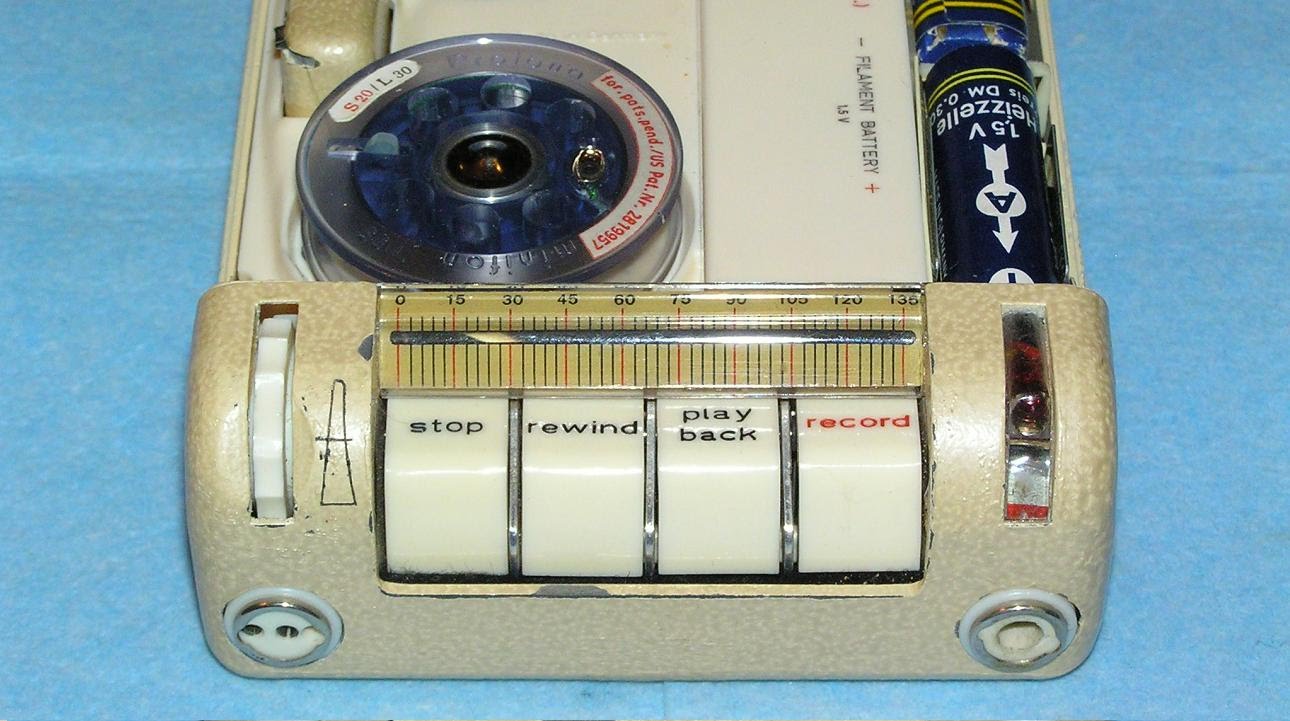
P-55
Interestingly, the company has repeatedly moved from one owner to another. Therefore, MI-51, as well as other portable voice recorders were produced under various brands, in addition to Protona. The most famous are: Telefunken, EMI and ITT. Voice recorders under the Minifon brand were sold from 1951 to 1967.
Due to the fact that the recorder has withstood several reprints, its technical features may differ significantly depending on the series and state of production. The most frail, both in terms of mechanics, and in terms of electronics, are the first series of 1951. The highest quality are considered to be branded Protona.
At the same time, the quality and reliability of absolutely all Minifon MI51 is much higher than that of, perhaps, all similar devices (voice recorders for the needs of the police and special services) of the 60s - 70s, produced in the USSR, Great Britain, GDR and the USA.
Of particular interest is the power circuit, which is caused by the lamp circuitry. The device is assembled on subminiature vacuum tubes DF67 and DL67. At the heat of the lamps, 1.5 V is supplied from an AA battery, the anode power supply is provided by a 413 type battery with a voltage of 30 V, and a separate 12 V battery powers the motor.
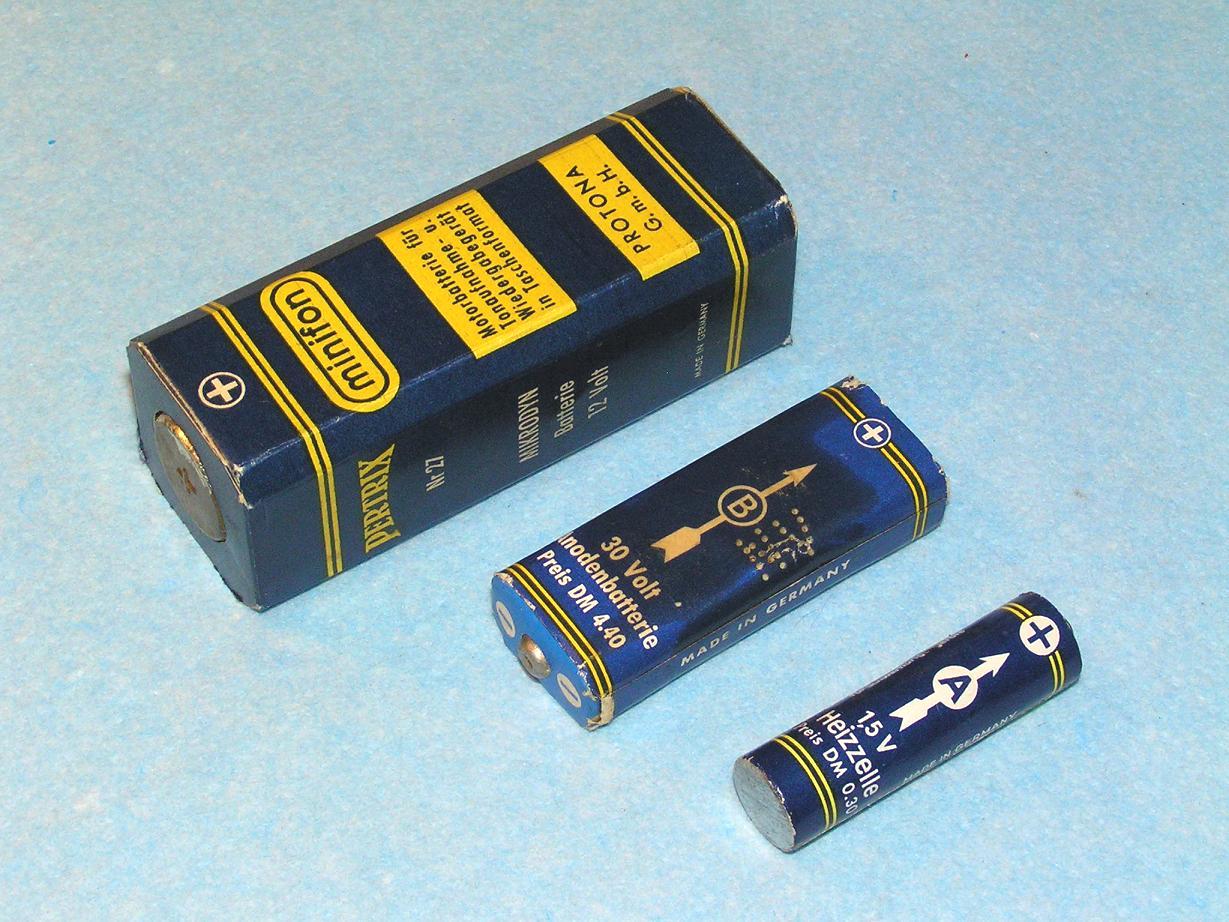
An impressive technical breakthrough for that time was to ensure continuous recording for 4 hours at a recording speed of 23 cm / sec. This was achieved through the use of durable wire with a small diameter of 0.05 mm.
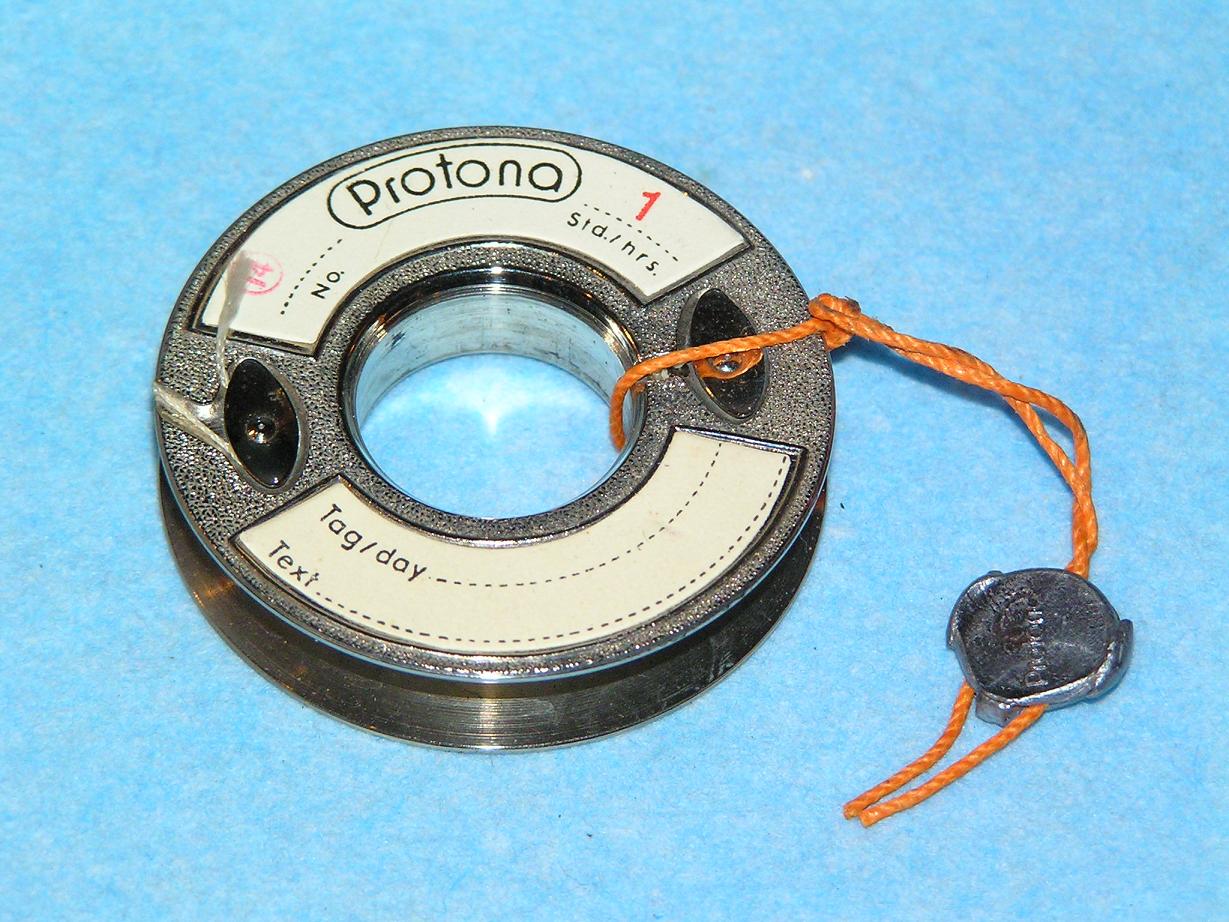
Today, collectors are surprised at the rare survivability of tape recorders for tape recorders, especially those of that age. Almost everything I've seen on eBay, was given in working condition. Minifon owes its durability to a structure that does not use a single rubber part. Even the belt, which is traditionally considered a consumable material, is a twisted spring.
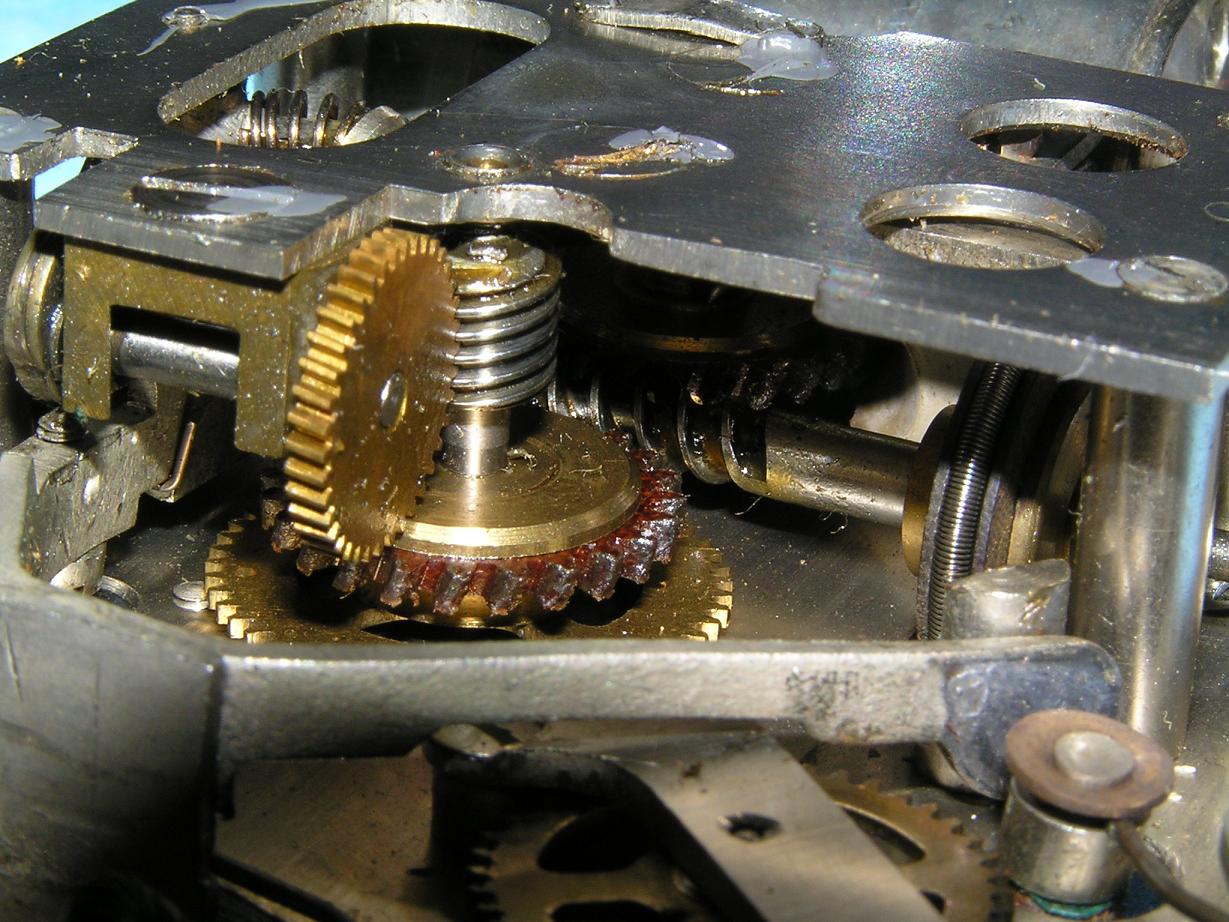
About the features of the circuitry eloquently tell the scheme.
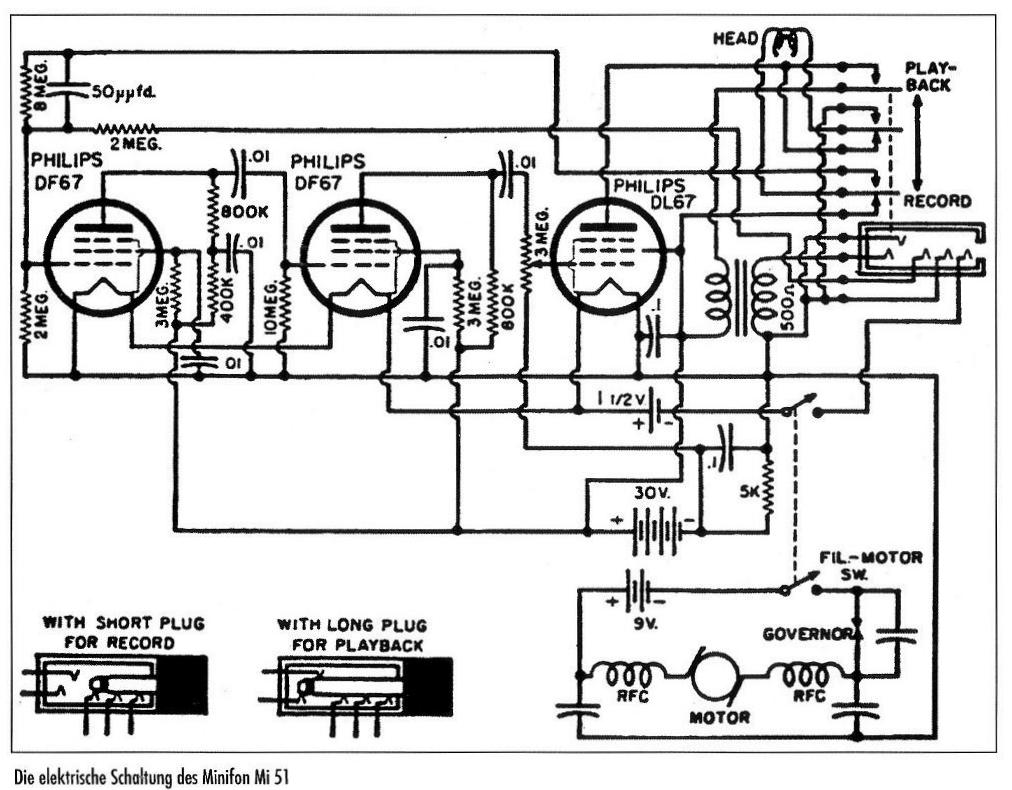
Examining in detail the mechanics of the device, the author of the blog-museum vintage-technics.ru made an interesting remark:
“To reduce the effect of wire motion instability, the receiving coil has a significantly larger diameter, and the head moves up and down smoothly during operation, laying the wire in even rows. According to this principle, the majority of stationary wire recorders were made at that time. ”
Watchmakers, which could be equipped with Minifon instead of a standard microphone, became a special pride of manufacturers, which gained popularity among operatives and spies. It is difficult for me to talk about the accuracy of the move, due to the fact that I have not had a chance to use them, but according to the memories and reviews of collectors who own this miracle, it allows to get quite an adequate record.
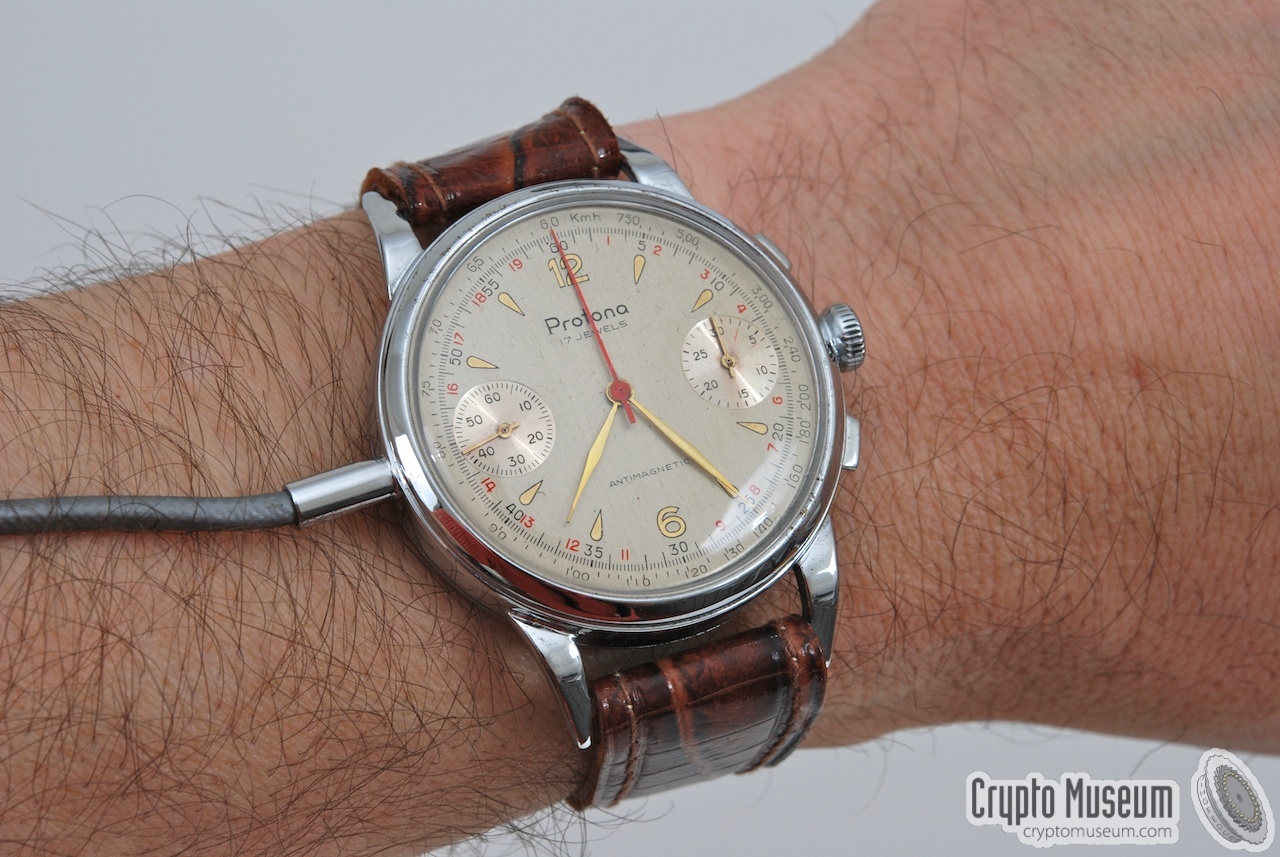
The microphone was connected to the recorder using a wire that was being pulled through the sleeve. There is a legend among collectors that in addition to the standard left-handed version (for right-handers), there is an extremely rare, custom-made, right-handed version of the microphone clock (for left-handers). I do not want to think about how much such an accessory can cost.
Also, depending on the wishes of the buyer, he could purchase other additional gadgets. The original stethoscope headset, which was included in the basic kit, looks original. Also in the kit could include: a small column, traditional headphones, a button and a pedal to start recording.
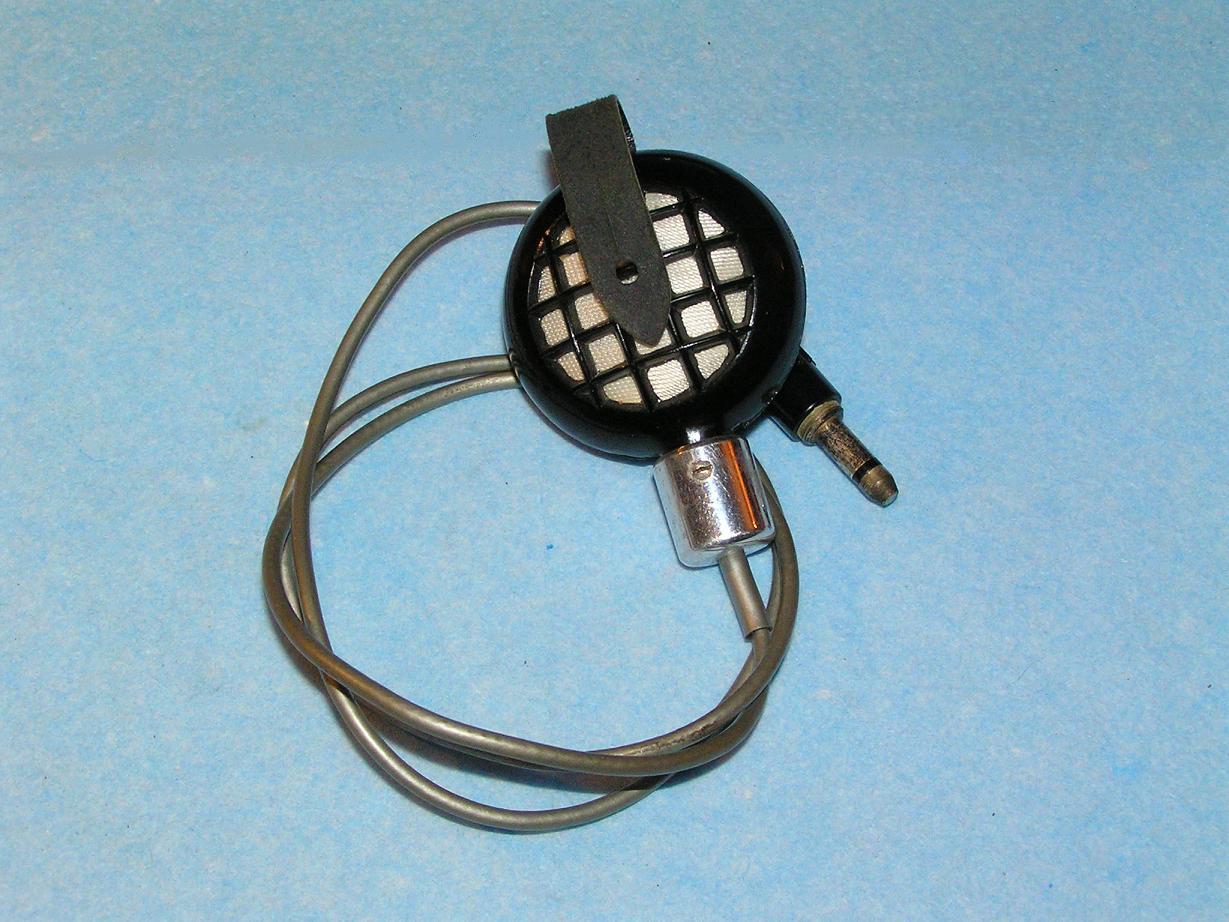
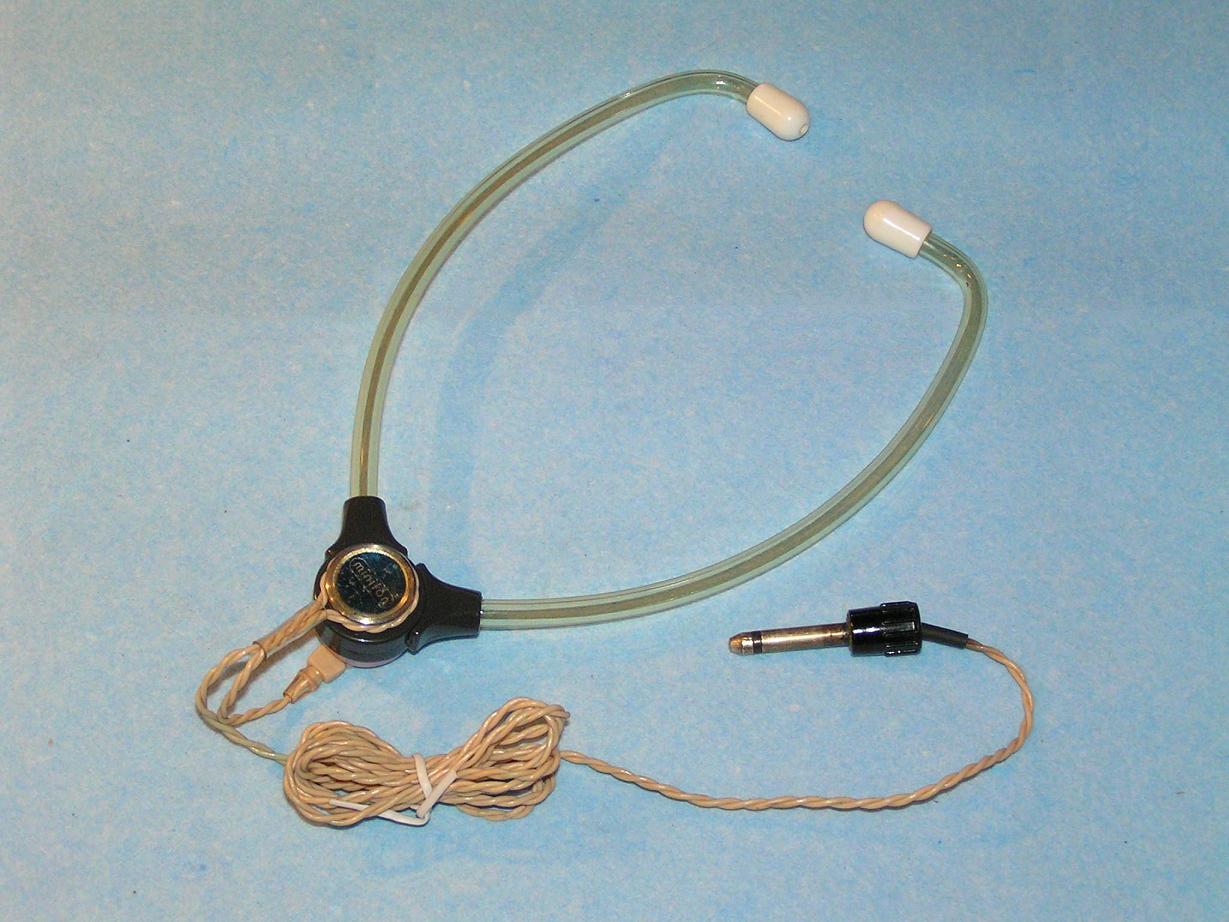
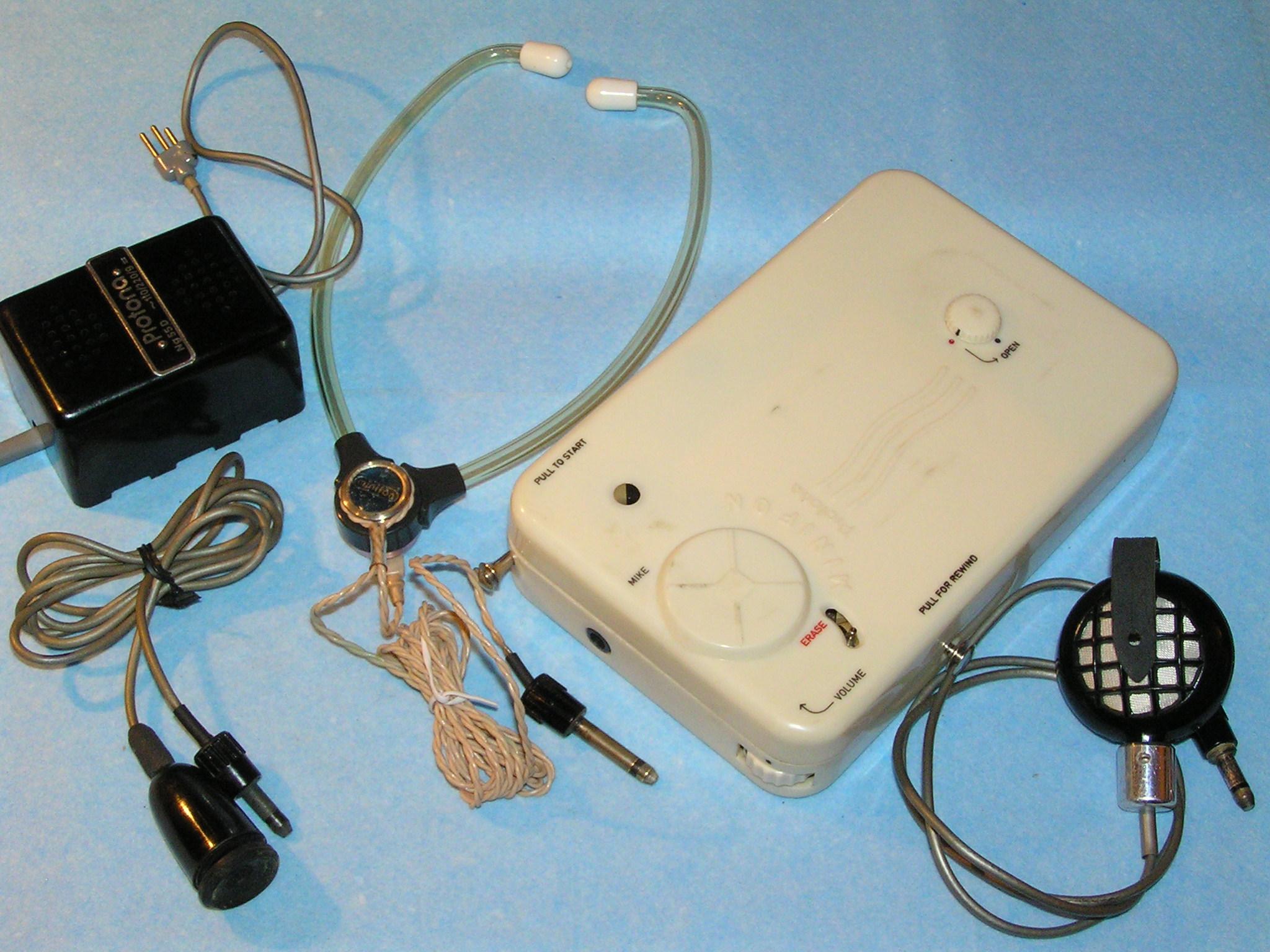
In other words, the German engineers provided people with a cold head and a warm heart with everything needed to keep a record during confidential conversations, interrogations and other routine moments of the daily activities of a security officer.
The inexorable and rapid scientific and technological progress did not leave Minifon MI-51 a chance to remain relevant and in demand. He was a friend of the security officers, FBI sheep, and spies of all stripes for less than 10 years. He was replaced by more advanced and miniature transistor counterparts. But it should be remembered that it was this device, the experience of its development and operation laid the foundation not only for future generations of special equipment, but also for portable audio in general.
I hope that the pilot will like it, and I count on your opinions about the gadget in the comments.
I want to thank the vintage-technics.ru resource for the published materials and photos.
Photos used:
vintage-technics.ru
www.cryptomuseum.com
imperiya.by
Jeans
In our catalog (I don’t know, unfortunately or fortunately) there is no special equipment, while there you can easily find a variety of portable audio equipment - headphones , players and more.

Perhaps one of the most legendary, for many years predetermining the development trends of this type of audio equipment, was the special portable wire recorder Protona Minifon MI-51 of 1951. This device was considered the smallest of the mass-produced in the world from 1951 to 1955. A characteristic feature was the use of a number of unique for that time accessories (headphones, hidden-wear microphones, etc.), to which a separate part of the article will be devoted.
Minifon - a new format of special equipment
Perhaps everyone who watched the legendary Soviet series of 17 moments of spring recall the scene where Stirlitz uses a portable voice recorder. The film used a portable reel film recorder “Electron-52D”, which was “made up” for Siemens products, by sticking a logo.
')

I have never met such portable tape recorders since the war. The vast majority of wartime voice recorders were quite impressive in size, like the unit shown in the photo below, supposedly by the company telefunken.

At the same time, the activities of the special services during the 2nd World War showed that employees of various departments badly need a portable tape recorder, preferably with independent power. The future creator Minifon knew about this need.
Willy Dryheim, who began developing such a device back in 1948. It is quite natural that Dryheim developed a portable tape recorder using lamps, while the first point transistors only appeared as imperfect cumbersome experimental devices.
To develop the development, the engineer began a collaboration with businessman Nikolaus Monske and his company Monske & Co GmbH. Monske, in turn, was able to attract private investment from Ernst Genning, who during the war was his Luftwaffe counterpart. By whom and where Dryheim himself worked during the war is unknown, the biographical data of the inventor are not freely available.
A new device was created in 2 years, and another year was spent on the organization of mass production. The latter were particularly problematic in Germany, whose industry had not yet fully recovered from the consequences of defeat in World War II.
The gadget was called Minifon MI-51. The device was presented to the general public at the Industriemesse industrial fair in Hanover. Dictaphone instantly won the interest of visitors and in particular representatives of the special services, who, it would seem, got what they wanted.

According to www.cryptomuseum.com , by the end of 1951, one unnamed customer from the United States (I think it was either a “bureau” or the CIA) issued a large order, with an advance payment of $ 50,000. By this time, the company has increased the staff number from 70 to 180 people. In 1951, the Minifon MI-51 cost 680 DM (which today would be about $ 3000).
The device turned out to be really compact for that time 17x11x3.5 cm. Moreover, it was autonomous, which, together with the dimensions, opened up new possibilities for use. Over the course of the year, several options for a complete set were developed, among which the wrist watch microphone particularly stood out.

We can safely say that for the officers of the special services and detectives of the time, Minifon MI-51 was such a welcome gadget, like today is another new iPhone for fans of Apple products. It is known that, due to the lack of mass production of such devices in the countries of the social camp, Minifon was procured through front companies for the secret services of the USSR, the GDR and Poland, until the appearance of the domestic transistor dictaphone "Interlocutor".
Minifon became the basis for the prototype of the world's first black box, which was developed in the early 50s by Australian aerospace engineer David Warren. For the first tests, Warren simply slightly modified several wire miniphones.
Updated gadget from the company that goes hand in hand
By the end of 1951, the company was inundated with orders, and its production capacity was barely coping. However, in 1952, in the process of active exploitation, children's diseases of the gadget were revealed. It is natural that for such a device failures and problems with functionality were similar to death.
What difficulties were with the miniphone is not clear, but even the author of the blog-museum Vintage-technics.ru, one of the few collectors owning this device, notes the lower quality of the MI-51 production of the Monske & Co GmbH period compared to their subsequent modifications. At the same time, there are logistical difficulties with shipments to the United States.
In 1952, the device's creator, Willy Dryheim, left the company for unknown reasons. Shortly thereafter, financial problems force Monske & Co GmbH to seek support, a series of layoffs are underway. The German company Telefunken, a giant of the German radio industry, is showing an interest in absorbing a company in distress, but it is late. Instead, Protona, founded by Liechtenstein businessman Reinhold Stach, buys production.
The new team of engineers improves spy gadget and solves the problems of the first versions. Demand for the device continues to remain consistently high until the year 1955, i.e., until the moment when Protona Gmbh launched an even more advanced and compact voice recorder Minifon P55.

P-55
Interestingly, the company has repeatedly moved from one owner to another. Therefore, MI-51, as well as other portable voice recorders were produced under various brands, in addition to Protona. The most famous are: Telefunken, EMI and ITT. Voice recorders under the Minifon brand were sold from 1951 to 1967.
Mechanics, circuitry, materials
Due to the fact that the recorder has withstood several reprints, its technical features may differ significantly depending on the series and state of production. The most frail, both in terms of mechanics, and in terms of electronics, are the first series of 1951. The highest quality are considered to be branded Protona.
At the same time, the quality and reliability of absolutely all Minifon MI51 is much higher than that of, perhaps, all similar devices (voice recorders for the needs of the police and special services) of the 60s - 70s, produced in the USSR, Great Britain, GDR and the USA.
Of particular interest is the power circuit, which is caused by the lamp circuitry. The device is assembled on subminiature vacuum tubes DF67 and DL67. At the heat of the lamps, 1.5 V is supplied from an AA battery, the anode power supply is provided by a 413 type battery with a voltage of 30 V, and a separate 12 V battery powers the motor.

An impressive technical breakthrough for that time was to ensure continuous recording for 4 hours at a recording speed of 23 cm / sec. This was achieved through the use of durable wire with a small diameter of 0.05 mm.

Today, collectors are surprised at the rare survivability of tape recorders for tape recorders, especially those of that age. Almost everything I've seen on eBay, was given in working condition. Minifon owes its durability to a structure that does not use a single rubber part. Even the belt, which is traditionally considered a consumable material, is a twisted spring.

About the features of the circuitry eloquently tell the scheme.

Examining in detail the mechanics of the device, the author of the blog-museum vintage-technics.ru made an interesting remark:
“To reduce the effect of wire motion instability, the receiving coil has a significantly larger diameter, and the head moves up and down smoothly during operation, laying the wire in even rows. According to this principle, the majority of stationary wire recorders were made at that time. ”
Watchmakers, which could be equipped with Minifon instead of a standard microphone, became a special pride of manufacturers, which gained popularity among operatives and spies. It is difficult for me to talk about the accuracy of the move, due to the fact that I have not had a chance to use them, but according to the memories and reviews of collectors who own this miracle, it allows to get quite an adequate record.

The microphone was connected to the recorder using a wire that was being pulled through the sleeve. There is a legend among collectors that in addition to the standard left-handed version (for right-handers), there is an extremely rare, custom-made, right-handed version of the microphone clock (for left-handers). I do not want to think about how much such an accessory can cost.
Also, depending on the wishes of the buyer, he could purchase other additional gadgets. The original stethoscope headset, which was included in the basic kit, looks original. Also in the kit could include: a small column, traditional headphones, a button and a pedal to start recording.



In other words, the German engineers provided people with a cold head and a warm heart with everything needed to keep a record during confidential conversations, interrogations and other routine moments of the daily activities of a security officer.
Total
The inexorable and rapid scientific and technological progress did not leave Minifon MI-51 a chance to remain relevant and in demand. He was a friend of the security officers, FBI sheep, and spies of all stripes for less than 10 years. He was replaced by more advanced and miniature transistor counterparts. But it should be remembered that it was this device, the experience of its development and operation laid the foundation not only for future generations of special equipment, but also for portable audio in general.
I hope that the pilot will like it, and I count on your opinions about the gadget in the comments.
I want to thank the vintage-technics.ru resource for the published materials and photos.
Photos used:
vintage-technics.ru
www.cryptomuseum.com
imperiya.by
Jeans
In our catalog (I don’t know, unfortunately or fortunately) there is no special equipment, while there you can easily find a variety of portable audio equipment - headphones , players and more.
Source: https://habr.com/ru/post/374893/
All Articles